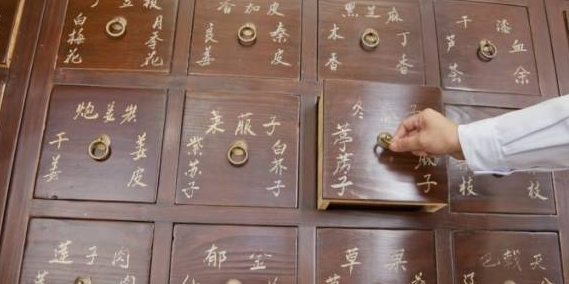Imagine a therapy that supposedly cures most ailments and for which almost 100 per cent of all the published studies conclude is effective — in other words, a panacea which has been tested but never faulted by science. This can only mean that the treatment in question is a miracle cure which is useful for every single condition and in every single setting. Would we not all love to know such a therapy?
想象下一种可以治愈大多数疾病的疗法,几乎所有发表的研究中得出的结论都是有效的,换句话说,这是一种久经检验但从未被科学质疑过的灵丹妙药。这只能意味着我们提到的这个治疗是一种奇迹,它对不同情况下的每一种病症都有效。我们不是都会喜欢这种疗法吗?
Simple common sense tells us, however, that such miracle cures cannot exist — unless, of course, we consider the wide range of treatments that fall under the umbrella of Traditional Chinese Medicine.
然而,常识告诉我们,这种奇迹是不可能存在的——除非,当然啦,我们认为中医治疗覆盖的范围是很广泛的。
Take acupuncture, for instance. Most traditional acupuncturists will try to convince you that acupuncture is a veritable panacea, a treatment that works for anything and everything ranging from acne to zoster. In case you find this hard to believe, go on the internet and try to find a single condition for which acupuncture is not claimed to be effective.
以针灸为例。大部分传统针灸师会试图说服你,针灸是一个名副其实的万能药,治疗的范围,从痤疮到带状疱疹。如果你不信,上网去搜搜病例看看针灸是不是声称很有效。

What is more, acupuncture trials hardly ever generate negative findings — at least those that originate from China. We and others have shown that Chinese trials of acupuncture as good as never suggest that acupuncture does not work. This has led to the bizarre situation where one does no longer need to read the paper reporting a new Chinese study because one already knows what it shows, namely that acupuncture is effective. If that is so, one does not even need to conduct the study, since one already knows the outcome before the research has started.
更妙的是,针灸试验没有产生任何负面的结果——至少那些源自中国的信息是这么说的。我们和其他一些人于是明白了中国的针灸实验是从来不会认为无效的。如果这样的话,你何必还要进行研究呢,在研究之前已经知道结果了啊。
Perhaps you think the ‘Western’ scientists who disclosed this baffling phenomenon are chauvinists who, for one reason or another, want to discredit Chinese science. In this case, you would probably want to wait for a team of Chinese researchers repeating our investigations.
也许你认为西方科学家质疑这一令人困惑的现象是因为沙文主义或其他啥原因好抹黑中国。在这种情况下,你可能想等待一队中国研究人员复核下我们的调查。
Wait no more.
不用在等了。
Chinese researchers identified all randomised controlled trials (RCTs) of acupuncture published in Chinese journals. A total of 840 RCTs were included in their assessment, and 838 of them (99.8 per cent) reported positive results. Only two trials (0.2 per cent) reported negative results. The authors concluded: ‘Publication bias might be a major issue in RCTs on acupuncture published in Chinese journals … which is related to high risk of bias. We suggest that all trials should be prospectively registered in international trial registry in future.’
中国研究人员确认了中国期刊上发布的有关针灸的所有随机对照试验。共有840个随机对照试验及评价,其中838例(99.8个百分点)报道结果有效。只有两个试验(百分之0.2)报告结果无效。作者得出的结论是:在中国期刊发表关于针灸随机对照试验结果的主要问题是太偏颇了……很明显的先入为主(认为有效)。我们建议,以后所有实验都应该提前在国际实验注册备案。
For many years I, too, had been inclined to give my Chinese colleagues the benefit of the doubt and assumed that publication bias — the phenomenon where negative results tend to remain unpublished — might be the explanation. If so, trial registration would indeed be the answer. But think of it: publication bias might provide a reason for a preponderance of positive findings but it cannot truly explain that close to zero per cent of negative results see the light of day. There must be other factors involved.
多年来我一直致力于给我的中国同事灌输质疑的好处,以及发表的文章一边倒——也可能是负面的情况根本没有被报道出来。如果是这样的话,实验前在国际实验注册备案是个不错的办法。再回过头来看看,公布的实验结果一边倒的表示有效,负面效果几乎为零,对此没有个清楚明了的解释。肯定还有其他因素。
One obvious explanation could be that many or most of the Chinese studies are — dare I say it? — dodgy to the point of being fraudulent. This allegation seems so outlandish that I would never have voiced it, unless there is some pretty solid evidence to back it up.
一个明显的解释是中国的很多研究或者说绝大部分研究——我为啥这么说呢?——他们(的实验)不可靠且不诚实。如果没有确凿的证据,我绝对不会发出这样粗鲁的指控。
A recent survey of Chinese clinical trials has revealed fraudulent practice on a massive scale. China’s food and drug regulator carried out a year-long review and concluded that more than 80 per cent of clinical studies are ‘fabricated’. The investigators uated data from 1,622 clinical trial programmes of drugs awaiting approval by the regulator. Much of the data were found to be incomplete, failed to meet analysis requirements or were untraceable. Some institutions were suspected of deliberately hiding or deleting records of adverse effects, and tampering with evidence that did not meet expectations. ‘Clinical data fabrication was an open secret even before the inspection,’ an unnamed Chinese hospital director was quoted as saying. Contract research organisations seem to have become ‘accomplices in data fabrication due to cutthroat competition and economic motivation’.
最近对中国临床实验的调查显示了他们有大规模的欺诈行为。中国食品药物监管部门进行了长达一年的回顾总结,百分之80以上的临床研究数据为“捏造”的。研究人员评估了1622个等待监管机构批准的临床试验方案的数据。大亮的数据被认为是不完整的,不符合要求或无法进行追踪分析的。甚至一些机构涉嫌故意隐瞒或删除不利影响的记录,并篡改证据以符合预期结果。一位不愿透露姓名的中国医院主任说:“在审核前,“制做”临床数据已经就是个公开的秘密了”。合同研究组织,由于激烈的竞争以及经济利益,成为了数据造假的共犯。CRO----合同研究组织,20世纪80年代初起源于美国,它是通过合同形式为制药企业、医疗机构、中小医药医疗器械研发企业、甚至各种政府基金等机构在基础医学和临床医学研发过程中提供专业化服务的一种学术性或商业性的科学机构。
The human rights activist Mai Ke went one step further, claiming that there is an ‘all-pervasive culture of fakery’ across all products made in the country. ‘It’s not just the medicines,’ he told Radio Free Asia. ‘In China, everything is fake, and if there’s a profit in pharmaceuticals, then someone’s going to fake them too.’
人权专家Mai Ke进一步补充道“在这个国家的产品制造业中有一种无处不在的造假文化,不仅是药物,”他告诉自由亚洲电台“在中国,啥都有假货,如果药品有利可图,就有人会去造假。”
Crucially, he stressed that the problem also extends to Traditional Chinese Medicines: ‘It’s just harder to regulate the fakes with traditional medicines than it is with Western pharmaceuticals, which have strict manufacturing guidelines.’
最重要的是,他强调,这种现象也蔓延到了中医药:“比起西医传统的中医药监管起来难度要高的多,因为西药有严格的生产标准。”
Academic ethics is an underdeveloped field in China; this leads to a culture that is accepting of academics manipulating data. ‘I don’t think that the 80 per cent figure is overstated,’ another Chinese insider commented.
学术道德是中国一个欠发达的领域;这导致了一种文化,对学者操纵数据比较宽容。另一位中国内部人士评论说,我认为80%的数字没有夸大。
Considering data fabrication on such an epidemic scale, it seems much easier to understand the above-mentioned phenomenon, where nearly 100 per cent of Chinese acupuncture studies generate positive findings. Such trials heavily pollute the worldwide evidence, particularly because the Chinese trials constitute a major chunk of the current evidence base in this area.
考虑到这样大规模的数据造假,上述针灸实验近乎百分百有效的现象就不难理解了。这些实验数据严重污染了世界范围内的数据库,尤其是现有的这类大部分由中国实验数据构成的数据库。
If we agree that data fabrication has seriously detrimental effects, we must ask what we can do about it. I feel we have little choice but to distrust the evidence that originates from China. At the very minimum, we must scrutinise it thoroughly and sceptically. Whenever it looks too good to be true, we ought to discard it as unreliable.
如果我们都赞同数据库造假会导致严重的影响,我们必须思考下能做些什么。我们的选择不多,除了质疑中国的实验数据。至少,我们要详细的深入检查和质疑。无论何时,什么东西看起来好得不像话了,我们就应该把它当做不靠谱的东西抛弃掉。












